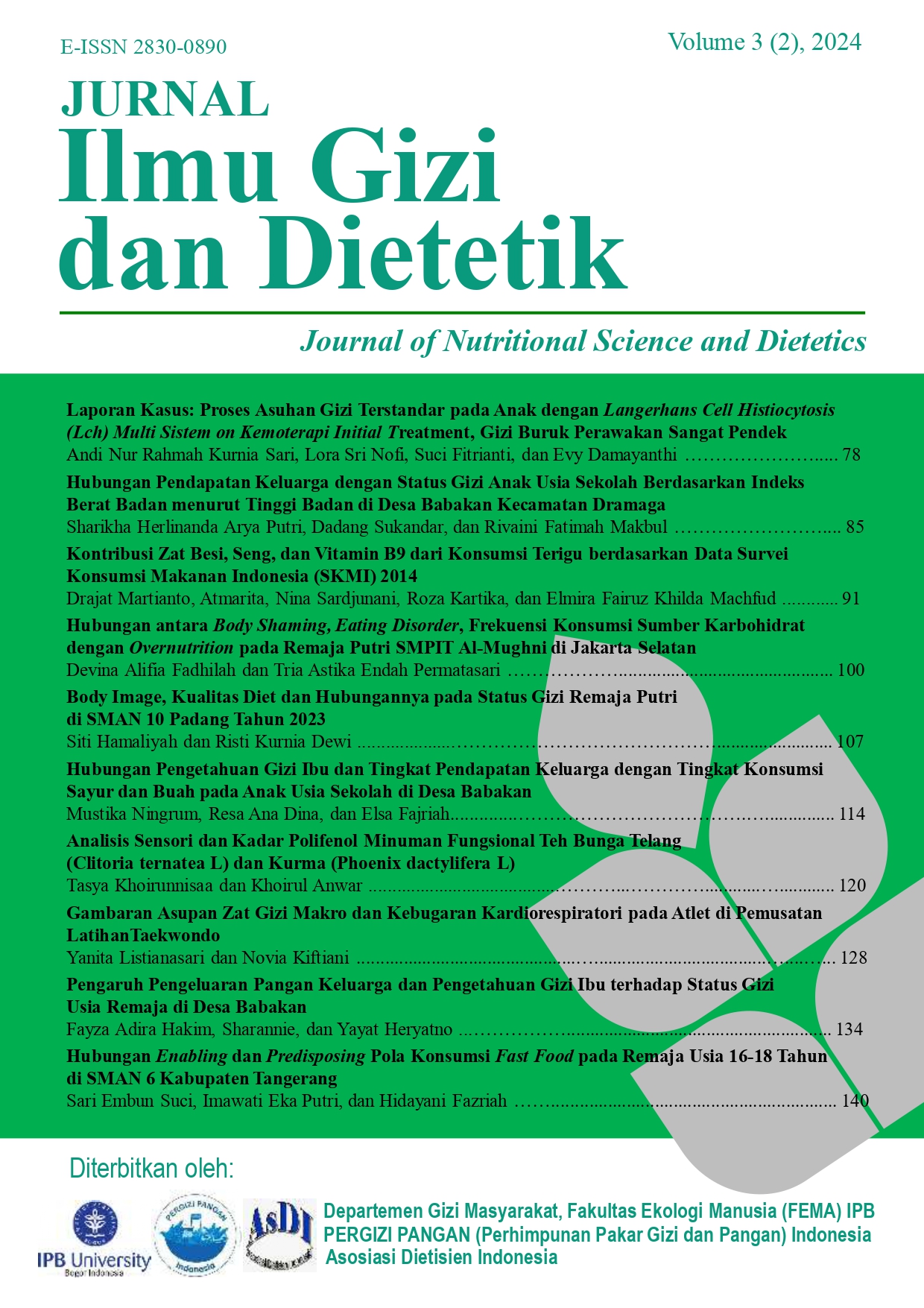Kontribusi Zat Besi, Seng, dan Vitamin B9 dari Konsumsi Terigu berdasarkan Data Survei Konsumsi Makanan Indonesia (SKMI) 2014 The Contribution of Wheat Flour to Fe, Zn, and Vitamin B9 based on Indonesian Food Consumption Survey (SKMI) Data 2014
Abstract
The mandatory wheat flour fortification programme in Indonesia aims to reduce the prevalence of iron deficiency anaemia (IDA). Despite this, the programme's effectiveness has rarely been evaluated. This study analyzes the contribution of wheat flour and processed food consumption to the intake of Fe, Zn, and vitamin B9 (folic acid) using data from the 2014 Indonesian Food Consumption Survey (SKMI). The study utilized a cross-sectional research design and included a large sample of 145.360 subjects. The results clearly demonstrate that the average wheat flour consumption among the Indonesian population falls short of the recommended consumption level of 75 g/cap/day for a successful food fortification programme, with an average of only 43.17±72.78 g/cap/day. It is noteworthy that only a small percentage of the Indonesian population, ranging from 10-30%, consumes wheat flour above the recommended level. Consuming wheat flour at a rate of 75 g or more per capita per day contributes to the recommended daily allowance (RDA) of iron, zinc, and folic acid intake, providing 20.35±11.96% of the RDA of iron intake, 57.52±32.73% of the RDA of zinc intake, and 12.01±6.45% of the RDA of folic acid intake. Regular monitoring of wheat flour consumption is needed to evaluate the impact of flour fortification in reducing micronutrient deficiency in Indonesia. The Indonesian Food Consumption Survey (SKMI) needs to be conducted now and regularly in the future so that the development of flour consumption and its contribution to overcoming IDA problems can continue to be monitored, as the basis to improve the policy to tackle iron deficiency anaemia (IDA) problem in Indonesia.

